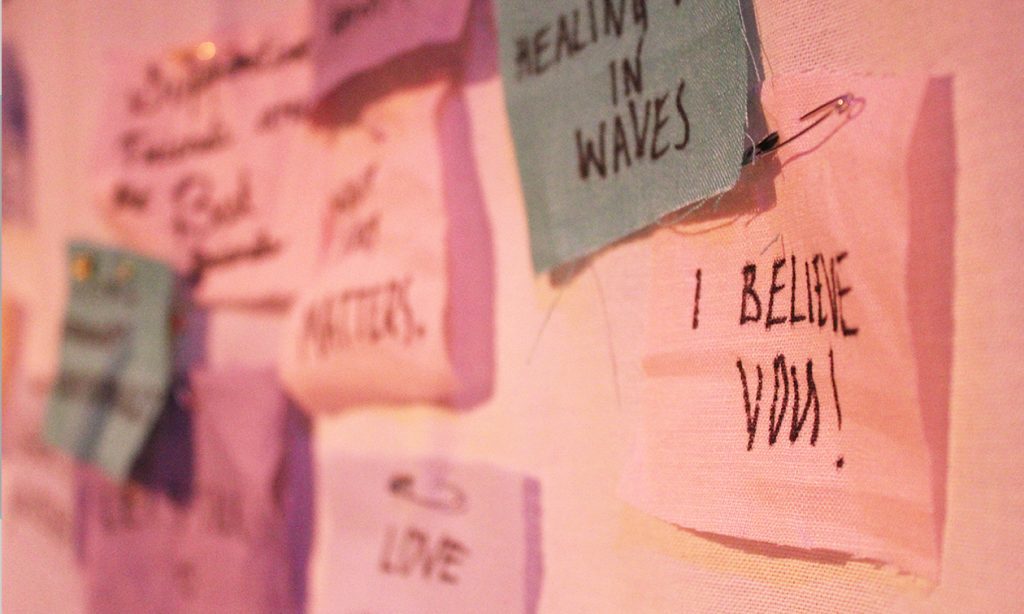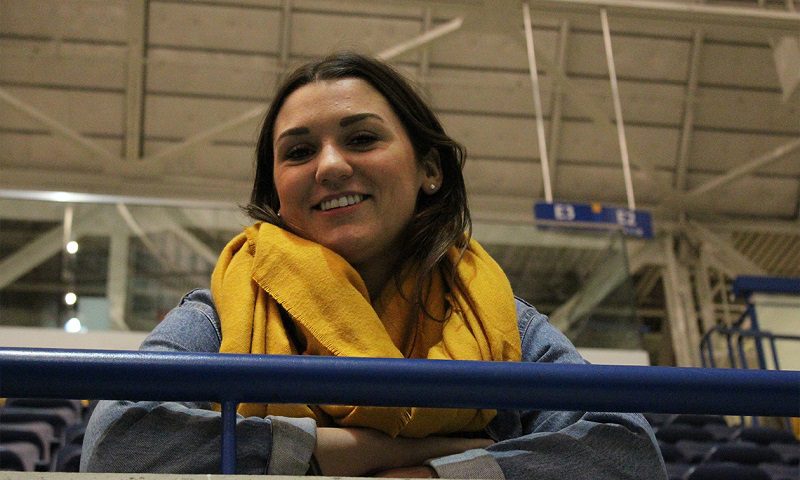A cottage 200 kilometres away from your house with no reception or Wi-Fi is the worst place to discover a lump in your breast. At least, it is for a city slicker like me who relies on the internet and my mom for insight on any slight change in my physical health.
“What the hell is that?” I said, poking furiously at a pea-shaped lump which had formed just underneath the skin above my nipple in my left breast. Sitting upright in bed at a cottage my boyfriend and his family rented the summer of 2016, I shuddered. A spider definitely crawled down my shirt and bit me in the middle of the night, right?
Suddenly, I hated that quaint cottage in Meaford, Ont., with its pretty view of Georgian Bay, charming wooden furniture and plaid bedspreads. I glared at the golden ray of light streaming in from the bedroom window.
Absent-mindedly prodding at my breast, I was trying to figure out how to escape this cottage hell.
Then, the lump moved in a circular motion beneath my fingers. It felt like a joystick on a GameCube controller.
Groaning, I decided a spider definitely bored its eggs into me. Soon, a tidal wave of baby eight-legged abominations would burst out of my chest like the thing from Alien, killing me instantly.
I was about to tell my boyfriend he should start planning my funeral, but I saw a look on his face I had never seen before. His eyebrows were furrowed and his lips were drawn into a tight line. There was something neither of us wanted to say out loud, like saying it would make it real. Whatever was in my breast was somehow worse than a bunch of spiders.
My mind started spinning. “I’m too young to get breast cancer, aren’t I?” I thought. I reached for my phone on the wooden nightstand, pacing as I frantically tried to Google my condition. No Wi-Fi. We were so far away from civilization my data wouldn’t even work.
My mom would have to serve as my temporary internet. I texted her about the lump and hit send. No reception. I turned to look at my boyfriend and cried, certain I had breast cancer and was going to die.
We drove back to Toronto a few days later. My boyfriend stopped me from Googling my lump in the car, saying it would make me feel worse. Swallowing hard, I put my phone in my purse. With nothing else to do with my hands, I anxiously fiddled with my lump the entire drive back. My breast began to bruise.
As soon as I got home, I got several ultrasounds and a biopsy. My doctor diagnosed me with a non-cancerous breast tumour known as a fibroadenoma, which is most common in women in their 20s and 30s. The scariest thing about it is it increases my risk of getting breast cancer by a mere 1.5 times.
I cried as my parents drove me back from the hospital, but this time, it was because of relief. Sitting in the back seat and looking out the window as we sped down the highway, I held my boyfriend’s hand and squeezed it for reassurance.
I was going to be OK, and so are most women who discover a lump in their breast – 80 per cent of breast lumps are benign, and most women develop these pesky, harmless invaders at some point in their lives.
The story continues after the infographic.
Made with Visme Infographic Maker
Since getting diagnosed with breast cancer in your 20s is rare, Steven Narod, a senior scientist at the Women’s College Research Institute, says young women should not create unnecessary anxiety by worrying about getting the disease.
But according to Dena Monjazebi, a 31-year-old Ryerson PhD student who has worked with cancer patients, being young does not make you immune.
“You always think cancer happens to someone else and not yourself. It’s never you,” says the medical physics student. “(You may think) it’s something only older people can develop.”
And even though it’s rare, breast cancer in younger people is more likely to be fatal.
According to the Canadian Cancer Society, doctors may not expect to find breast cancer in their younger patients, so they’re not as encouraged to receive regular breast examinations as older patients are. As a result, diagnosis is delayed, and by the time younger women get their breasts checked, the cancer is already advanced and aggressive.
Young women also have denser breast tissue, making breast screening technology, such as mammograms and ultrasounds, less accurate.
Because young women may not get a breast screening from their doctors right away, Monjazebi says it is vital for everyone to know how to perform breast self-exams – even men.
“Breast cancer can also happen in men. It is very rare, but it is still a possibility,” she said. Less than one per cent of breast cancer cases occur in men, and most men diagnosed with it are over 60.
Regardless of its rarity, Monjazebi said young men should still know how to check themselves and others for lumps and bumps. Why? Because breast self-exams are easy to do – and they can save lives. Forty per cent of diagnosed breast cancers were detected by women.
But above all, every woman should be aware of her past – women who have a family history of breast cancer are at a higher risk of developing the disease.
“I think the most important thing for women in their 20s is to know your family history,” says Narod. “If your mother or grandmother had breast cancer, I would consider getting a genetic test.” Genetic tests often require a blood or saliva sample from patients to determine if they have inherited any mutated genes that increase their chance of getting breast cancer.
And as a result of their heightened risk, Monjazebi says she advises women who have a family history to be more mindful of changes in their breasts.
Courtney Dean, a 21-year-old server from Newmarket, Ont., follows Monjazebi’s advice. Dean’s family has a history of breast cancer and she says she knows keeping up with her weekly breast self-examinations is crucial. “I just (want) to be careful about it,” says Dean.
Three years ago, Dean was undergoing her familiar routine of checking her breasts. This time, she noticed something out of the ordinary. A lump, about one inch long, had formed on her left breast, just under her nipple. She found she was able to move the small marble-sized mass with her fingers.
“I went to the doctor and they said, ‘No, don’t worry about it. It’s nothing,’” she says.
But she did worry about it. Dean says she thought she could feel her lump getting bigger. A followup ultrasound seven months later confirmed her fears – it had rapidly grown to the size of a peach pit.
“(I was) pretty nervous. I didn’t know very much about breast cancer at that point, so I wasn’t too positive about how it worked,” she says with a laugh. “Hearing it got bigger just sounded like something bad.”
Dean got a biopsy, but the results couldn’t clearly determine whether the lump was benign. The only way to be completely certain would be to take it out. Deciding enough was enough, Dean scheduled a surgery to evict the cumbersome, unwanted guest from her body.
She underwent the hour-long procedure and got the lump removed in October 2016. A week after the surgery, her doctors discovered it was a benign fibroadenoma. The only evidence of the ordeal is a small C-shaped scar around her nipple.
Since then, Dean continues to diligently check her breasts for abnormal growths every week, and she says she advises others to do the same. “Definitely keep tabs on any changes,” she says. “Don’t be afraid to go to your doctors about something concerning you.”
Just like Dean, I got surgery to remove my fibroadenoma last December.
Turns out a benign tumour isn’t as scary as a bunch of spiders after all.

